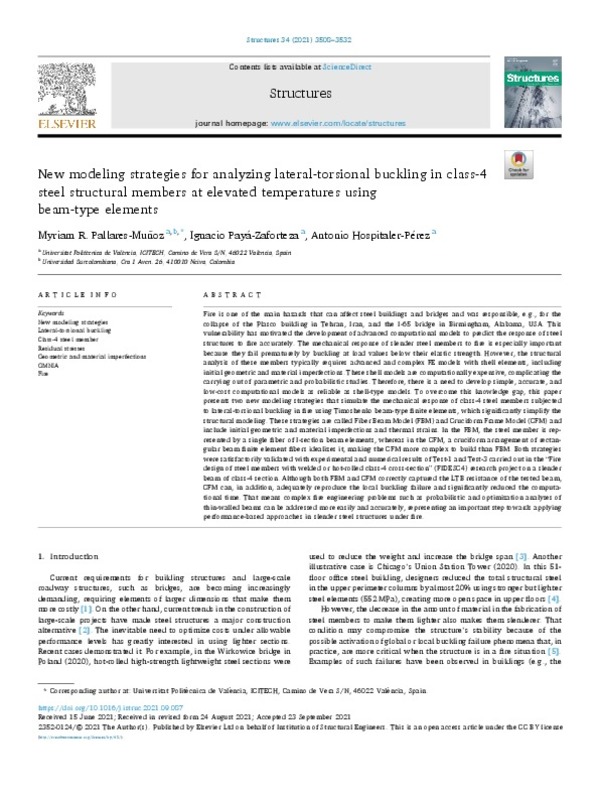JavaScript is disabled for your browser. Some features of this site may not work without it.
Buscar en RiuNet
Listar
Mi cuenta
Estadísticas
Ayuda RiuNet
Admin. UPV
New modeling strategies for analyzing lateral-torsional buckling in class-4 steel structural members at elevated temperatures using beam-type elements
Mostrar el registro completo del ítem
Pallares-Muñoz, MR.; Paya-Zaforteza, I.; Hospitaler Pérez, A. (2021). New modeling strategies for analyzing lateral-torsional buckling in class-4 steel structural members at elevated temperatures using beam-type elements. Structures. 34:3508-3532. https://doi.org/10.1016/j.istruc.2021.09.087
Por favor, use este identificador para citar o enlazar este ítem: http://hdl.handle.net/10251/181375
Ficheros en el ítem
Metadatos del ítem
| Título: | New modeling strategies for analyzing lateral-torsional buckling in class-4 steel structural members at elevated temperatures using beam-type elements | |
| Autor: | Pallares-Muñoz, Myriam R. | |
| Fecha difusión: |
|
|
| Resumen: |
[EN] Fire is one of the main hazards that can affect steel buildings and bridges and was responsible, e.g., for the collapse of the Plasco building in Tehran, Iran, and the I-65 bridge in Birmingham, Alabama, USA. This ...[+]
|
|
| Palabras clave: |
|
|
| Derechos de uso: | Reconocimiento (by) | |
| Fuente: |
|
|
| DOI: |
|
|
| Editorial: |
|
|
| Versión del editor: | https://doi.org/10.1016/j.istruc.2021.09.087 | |
| Agradecimientos: |
|
|
| Tipo: |
|









